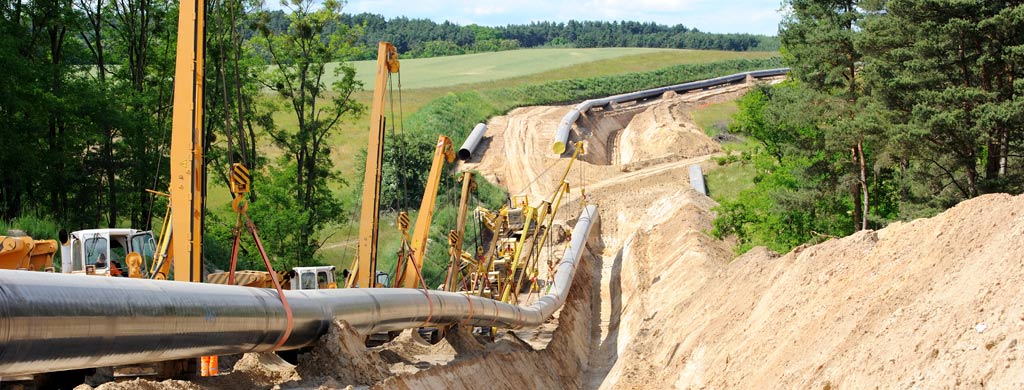Nine gas transmission system operators (TSOs) in the countries around the Baltic Sea have signed a Memorandum of Understanding (MoU) which aims to coordinate and facilitate hydrogen infrastructure and also to foster hydrogen market development in the Baltic Sea region. The MoU establishes and implements the cooperation between TSOs. The parties of the MoU are Polish GAZ-SYSTEM, Estonian Elering, Danish Energinet, Finnish Gasgrid Vetyverkot, Lithuanian Amber Grid, Swedish Nordion Energi, German GASCADE Gastransport, Latvian Conexus Baltic Grid and German ONTRAS Gastransport.
Kassel. The purpose of the cooperation in the Baltic Sea region is to coordinate collaborators’ activities for development of the hydrogen economy in the region. To support positive hydrogen development the companies will coordinate the development of infrastructure projects for the transmission and storage of hydrogen in the region. In addition, the group shares information about developments in the hydrogen market and projects related to renewable hydrogen production and demand. The companies work in close alignment with the EU’s Baltic energy market interconnection plan (BEMIP) group.
“We are pleased to be part of this important and necessary cooperation between transmission system operators in the Baltic Sea region. The hydrogen infrastructure in and around the Baltic Sea must be planned and built in an integrated manner. This is the only way to leverage the hydrogen potential on our doorstep - both onshore and offshore”, says GASCADE Managing Director Ulrich Benterbusch.
The Baltic Sea region has excellent conditions for clean hydrogen production
The Baltic Sea region has renewable energy resources and thus the potential to supply up to 45% of the clean hydrogen production outlined in the REPowerEU plan by 2030. The Baltic Sea region holds a substantial potential for onshore and offshore wind, which could be used for hydrogen production and to create a clean hydrogen market in the near future. Therefore, infrastructure and industrial companies operating in the Baltic Sea region are now developing new hydrogen pipeline infrastructure to unlock the potential of hydrogen production. In addition, the target is to deliver hydrogen from supply rich regions to demand centres.
The infrastructure development is supporting achievement of REPowerEU plan and targets set by the Marienborg declaration, signed by the prime ministers of the Baltic Sea countries in 2022. The signed MoU and active collaboration of the companies is taking the target of the Marienborg declaration of “exploring joint cross-border renewable energy projects and identify infrastructure needs” concretely forward as the companies plan to coordinate and facilitate the infrastructure development. Development of new infrastructure for both hydrogen and electricity will be crucial for accessing renewable energy sources. This will require cooperation between TSOs in the Baltic Sea region.
Safety and resilience of the European energy system on EU’s and regional agenda
The objective of the EU agenda and the Marienborg Declaration is to reduce Europe’s dependency on imported Russian fossil fuels, accelerate progress towards European climate targets and improve the safety and resilience of the European energy system. Developing the production and usage potential of hydrogen is one of the key elements for achieving these targets. By joining forces, the gas TSOs wish to contribute to this process by rolling out hydrogen infrastructures and thus facilitating the creation of a competitive and liquid hydrogen market, with numerous suppliers and users.
Coordinated development of hydrogen infrastructure in the Baltic Sea region will support the development of a flexible, safe, resilient, sustainable, and integrated pan-European energy system. The planned hydrogen infrastructures contributing to the achievement of EU and regional targets, is planned to cover Finland, Sweden, the Baltic states, Poland, and Germany by 2030.
Hydrogen projects around the Baltic Sea
The gas transmission operators have launched several large-scale studies for the development of cross-border hydrogen infrastructure projects with the goal of building an infrastructure and market in line with the REPowerEU plan, regional targets, national strategies, and the European Hydrogen Backbone vision.
At the moment these hydrogen infrastructure projects around the Baltic Sea consists of three cross-border infrastructure projects: the Nordic-Baltic Hydrogen Corridor, the Baltic Sea Hydrogen Collector, Interconnector Bornholm-Lubmin and the Nordic Hydrogen Route. In addition, the gas infrastructure operators are planning to implement in a coordinated manner other projects covering cross-border interconnectors, domestic backbones, and hydrogen storage.

